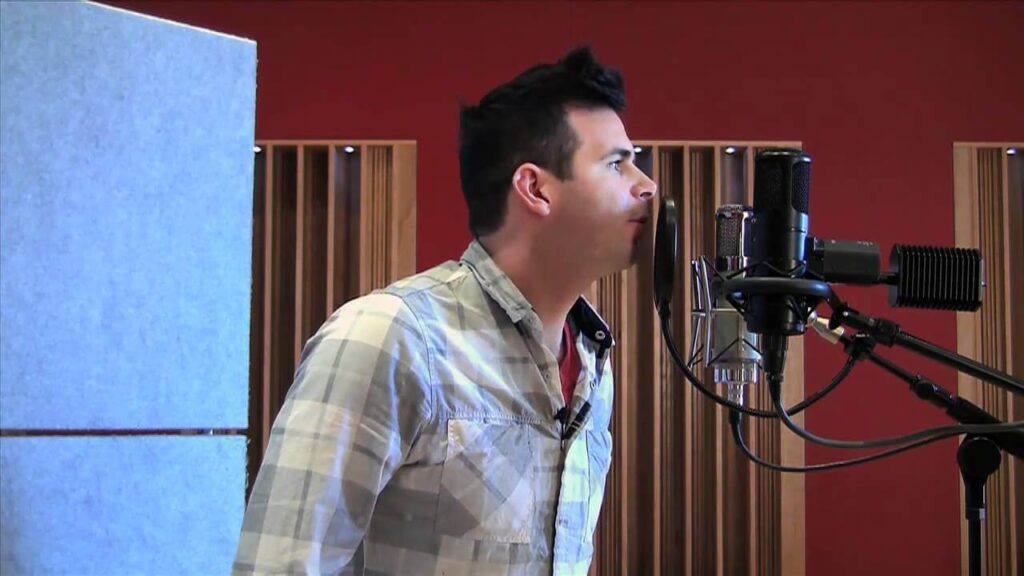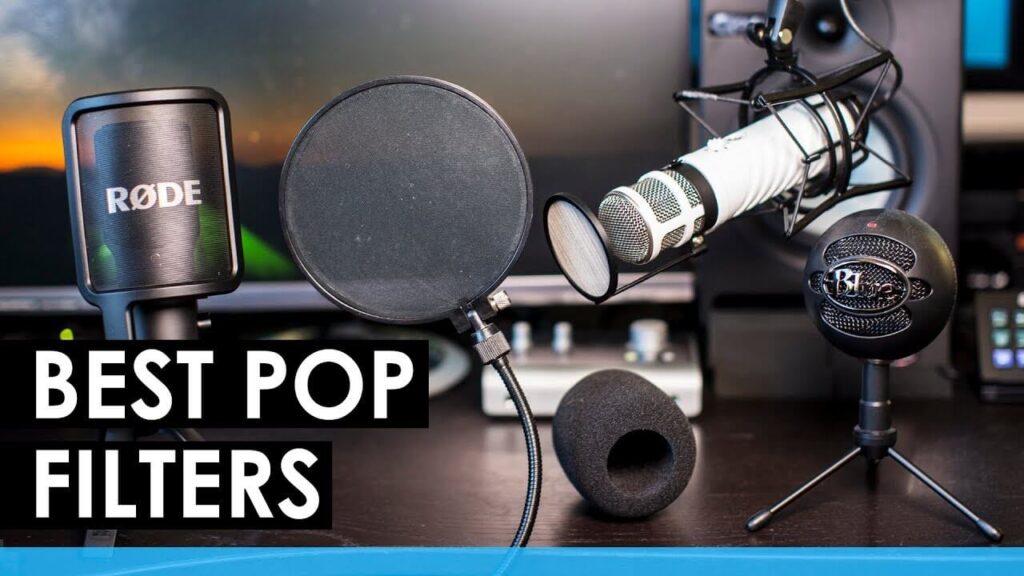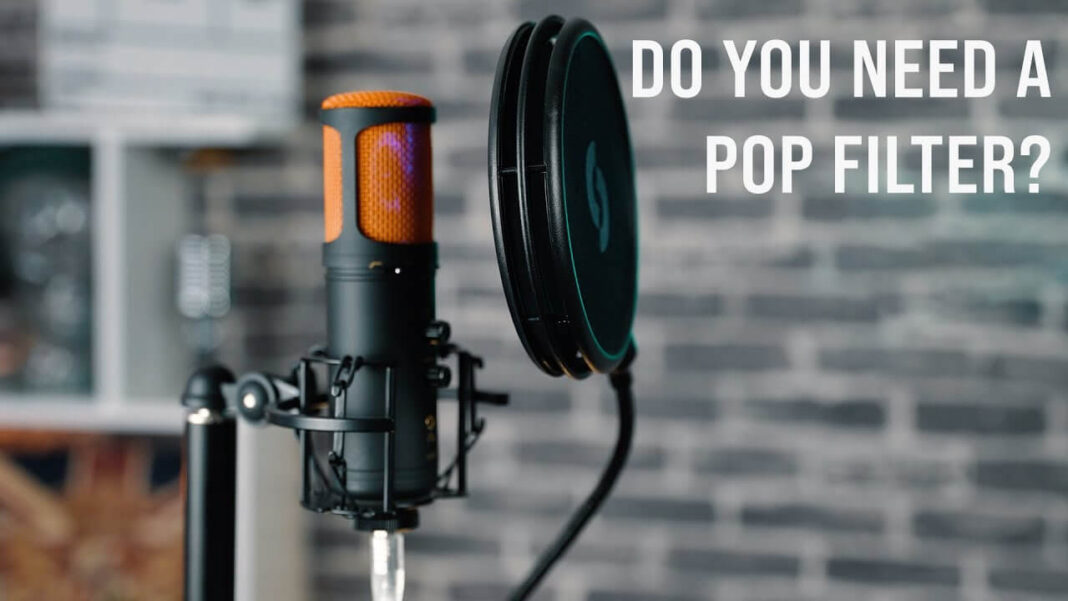When it comes to producing high-quality audio, one of the most important tools you can use is a pop filter. Whether you’re a podcaster, singer, or streamer, a pop filter helps to deliver that crisp, clear sound that sets professional recordings apart from amateur ones. But what exactly is a pop filter, and why do you need one? Let’s dive deep into the world of pop filters and understand why they’re so crucial for anyone serious about audio quality.
What is a Pop Filter?
A pop filter is a simple, yet essential, device used in audio recording to reduce or eliminate popping sounds that occur when pronouncing plosive consonants like “p,” “t,” or “b.” These sounds produce a burst of air that, when it hits the microphone, can cause distortion, making your recording sound unprofessional.
Typically, a pop filter consists of a circular frame covered with a thin material, like nylon or metal mesh. It’s placed between the microphone and the speaker or singer to diffuse the air, preventing those harsh bursts from being captured by the mic.
Why is a Pop Filter Important for Recording?
Without a pop filter, even the best microphone will pick up plosive sounds that can ruin an otherwise perfect recording. It helps ensure that your voice is captured cleanly, without the unpleasant spikes caused by plosives, making the audio sound smoother and more professional. Whether you’re recording vocals for music, a podcast, or a video, a pop filter is an indispensable tool for creating clear, high-quality sound.

Types of Pop Filters
Pop filters come in different materials and designs, each offering specific benefits. Here are the most common types:
Metal Mesh Pop Filters
Metal mesh pop filters are durable and offer long-term use. They typically have a finely woven metallic material that effectively disperses air blasts. Many professionals prefer metal pop filters because they are easier to clean, and the material doesn’t degrade over time like some fabrics.
Nylon Mesh Pop Filters
Nylon mesh pop filters are perhaps the most common type. Made from a simple fabric stretched over a frame, these filters are inexpensive and work well for most basic recording needs. While they may not last as long as metal filters, they do a good job of reducing plosives in day-to-day recording setups.
Foam Pop Filters
Foam pop filters are often confused with windscreens, but they serve a similar function. These foam covers are placed directly over the microphone to soften the impact of breath and other air bursts. Foam filters are especially useful outdoors, as they also help block wind noise.
How a Pop Filter Works
The primary function of a pop filter is to control plosive sounds. When someone speaks into a microphone, the letters “P,” “B,” and “T” send concentrated bursts of air directly into the microphone, causing unwanted noise. The pop filter disperses this air, so the microphone captures only the sound of your voice, not the air movement.
Controlling Plosive Sounds
Pop filters are particularly effective at stopping plosive sounds, which are often much louder than other parts of speech. These sounds can create a spike in the audio recording, making it harder to edit and potentially damaging to the microphone over time.
Reducing Background Noise
While the main job of a pop filter is to manage plosive sounds, it also helps to minimize background noise. By focusing the microphone’s pickup on your voice, a pop filter helps to block out extraneous sounds that might interfere with your recording.
Benefits of Using a Pop Filter
There are several reasons why a pop filter is a must-have for anyone involved in audio recording. Let’s explore some of the key benefits:
Enhances Sound Quality
By filtering out plosive sounds, a pop filter helps to produce clearer, more professional-quality recordings. The result is smoother audio that requires less editing and polishing in post-production.
Protects the Microphone
Air bursts from plosives can cause long-term damage to a microphone, especially if it’s a sensitive condenser mic. Pop filters act as a protective barrier, preventing moisture and saliva from reaching the microphone’s delicate internal components.
Creates a Professional Recording Environment
Using a pop filter shows that you’re serious about sound quality. Whether you’re a professional or a hobbyist, having a pop filter in place elevates your recording setup and gives your content a more polished, professional edge.
Pop Filters vs. Windscreens
Many people confuse pop filters with windscreens, but they serve different purposes. Here’s how to tell the difference and when to use each:
Key Differences
- Pop Filters: Designed to stop plosives during indoor recordings.
- Windscreens: Usually made of foam, windscreens are primarily used outdoors to block wind noise and general environmental sounds.
When to Use Each
If you’re recording indoors in a controlled environment, a pop filter is your best bet for reducing plosives. However, if you’re outside or in a windy area, a windscreen is essential for keeping background noise at bay.
Choosing the Right Pop Filter for Your Setup
There are many different pop filters on the market, so how do you choose the right one for your needs? Here are a few factors to consider:

Material Matters
Consider whether you prefer a metal or nylon mesh pop filter. Metal filters are more durable, but nylon filters are more affordable. Your choice may also depend on the type of microphone you’re using and your specific recording environment.
Size and Flexibility
Pop filters come in various sizes, and some offer adjustable arms to help you position them precisely where you need them. Choose a filter that fits well with your microphone stand and is easy to adjust.
Pop Filters for Different Microphones
Certain pop filters are designed to work best with specific types of microphones. For instance, condenser microphones may benefit from a multi-layered pop filter, while dynamic microphones may only require a simple nylon filter.
How to Properly Position a Pop Filter
Positioning your pop filter correctly can make all the difference in your recording. Here’s how to set it up:
Ideal Distance Between Pop Filter and Microphone
The pop filter should be placed about 2 to 6 inches away from the microphone. This gives it enough space to diffuse air bursts without affecting the sound quality.
Common Positioning Mistakes to Avoid
Don’t place the pop filter too close to the microphone, as it can cause muffled sound. Also, make sure it’s positioned directly in front of where you’ll be speaking to ensure it catches the air bursts.
DIY Pop Filters: Can You Make Your Own?
If you’re on a tight budget, you can create a DIY pop filter using materials you likely already have at home. Here’s how:
Materials You Can Use for a DIY Pop Filter
- A wire hanger for the frame
- A pair of pantyhose or stockings for the mesh
- Tape or clamps to secure it in place
Step-by-Step Guide to Creating a DIY Pop Filter
- Bend the wire hanger into a circular shape.
- Stretch the pantyhose or stockings over the frame.
- Secure the ends with tape or clamps.
- Attach the filter to your microphone stand.
Top Pop Filter Brands
There are many brands offering high-quality pop filters. Some of the top names include:
Neewer Pop Filters
Neewer is known for affordable, reliable audio equipment. Their pop filters are popular among beginners and professionals alike.
Stedman Proscreen XL
This high-end pop filter is made from a unique metal material that is designed to last. It’s a bit pricier but is favored by audio engineers for its durability and performance.
Aokeo Pop Filters
Aokeo offers budget-friendly pop filters that still provide great sound quality. Ideal for podcasters and streamers who want to improve their audio without breaking the bank.
Best Pop Filters for Podcasting
If you’re a podcaster, a pop filter is essential for maintaining clear audio. Here’s why:
Why Podcasters Need a Pop Filter
Podcasts often involve long, close-up speaking sessions, which makes controlling plosives a top priority. Without a pop filter, your listeners may be distracted by harsh sounds in the middle of your episodes.
Recommended Pop Filters for Podcasters
Some great options for podcasters include the Neewer NW(B-3) and the Blue Microphones The Pop. Both are affordable and designed specifically for voice recordings.
Pop Filters for Streamers and Gamers
Streamers and gamers rely on clear audio to communicate effectively with their audience. Here’s why pop filters are crucial for these setups:
Importance of Clear Audio for Streaming
In live streaming, there’s little room for error. A pop filter helps to ensure that your voice is heard clearly without the distractions of plosives, making your stream more enjoyable for viewers.
Suggested Pop Filters for Streaming Setups
For gamers and streamers, the Aokeo Professional Microphone Pop Filter is a popular choice due to its affordability and effectiveness in reducing background noise.
How to Clean and Maintain Your Pop Filter
Like any piece of equipment, your pop filter needs regular cleaning to maintain its effectiveness.
Best Practices for Cleaning
Nylon mesh pop filters can be cleaned using a gentle soap and water solution. Metal pop filters are even easier to maintain and can simply be wiped down with a damp cloth.
How Often Should You Clean a Pop Filter?
If you’re using your pop filter regularly, it’s a good idea to clean it every couple of weeks to prevent buildup of dust, moisture, and bacteria.
Common Pop Filter Problems and Solutions
Even the best pop filters can run into issues. Here are a few common problems and how to fix them:
Pop Filter Sagging: How to Fix It
If your pop filter isn’t staying in place, try tightening the adjustable arm or replacing it with a sturdier model. Sometimes, simply adjusting the angle can help prevent sagging.
Overly Muffled Sound: Adjusting Your Setup
If your recording sounds muffled, your pop filter may be too close to the microphone. Try moving it a few inches further away to allow more room for the sound to travel clearly.
Advanced Techniques for Recording with a Pop Filter
For advanced users, there are several techniques to further improve sound quality when using a pop filter:
Multi-Layered Pop Filters
Some professionals use multi-layered pop filters, which consist of two or more layers of mesh. These are especially useful for high-sensitivity microphones that may pick up more subtle air movements.
Using Multiple Pop Filters for High-Sensitivity Microphones
In some cases, using more than one pop filter can be beneficial, especially when recording with very sensitive microphones. This technique helps to ensure that all air bursts are diffused before reaching the microphone.
Conclusion
In conclusion, pop filters are an essential tool for anyone serious about audio quality. Whether you’re recording music, podcasts, or streams, a pop filter helps to eliminate distracting plosives, protect your microphone, and create a professional-grade recording environment. With so many options available, finding the right pop filter for your setup can make all the difference in your recordings. Don’t overlook this small but powerful tool when building your audio setup!
Also Read: Storyhouse Chester – A Comprehensive Guide


